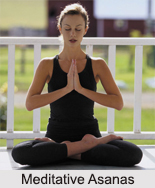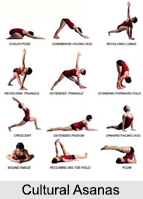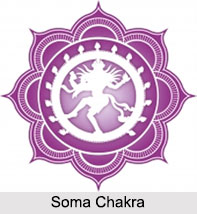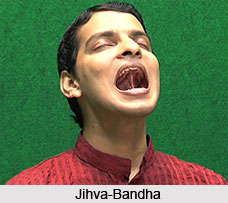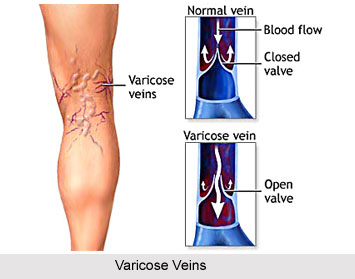 Varicose Veins are the dilated and tortuous, enlarged veins, particularly at the back of the legs. They are common in middle aged and elderly people. People who have to stand for a prolonged period at one place or are required to carry heavy weight for a long distance on their shoulders or head are prone to develop varicose veins.
Varicose Veins are the dilated and tortuous, enlarged veins, particularly at the back of the legs. They are common in middle aged and elderly people. People who have to stand for a prolonged period at one place or are required to carry heavy weight for a long distance on their shoulders or head are prone to develop varicose veins.
There are several causes that can lead to varicose veins. The defective valves in the long veins of the legs, like, long sephanous vein, result in the backward flow of blood from the thighs downward. This gives rise to sustained accumulation of the blood leading to an elongation in the portion of the sephanous vein in the ankle, back region of the calf muscles, back of the knee joints and inner aspect of the thigh. The squeezing action of the calf muscles is also not sufficient. Therefore, blood does not return back properly to the heart. During pregnancy also temporary varicosity of the long veins of the legs occur as a result of compression of the inferior vena cava by the pressure of the growing uterus. Valvular competence usually is re-established after pregnancy. Tumours obstructing blood flow can also cause varicose veins. When there is a thrombosis (blockage) in the deep veins of the legs, there is increased load on the superficial veins to return the blood to the heart leading to varicosity.
Patients affected by varicose vein generally complain of fatigue and discomfort in the legs while standing for a long time. There is a sharp localized pain in the area of the varicose veins; swelling of the ankles, itching of the skin over the legs. Skin ulcer on the legs and feet may also occur in cases of varicosity.
Patients who have to reduce their activities due to this disease need to undergo operative intervention. However, for cases that are not very severe, conservative means like raising the legs from the ground and keeping them over a stool can be put into practice to control the ailment. Application of crape bandage or use of elastic stockings up to the region of thigh during walking is helpful in minimizing the symptoms of varicose veins.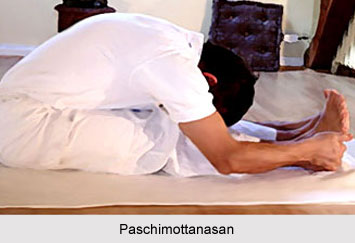 For mild and moderate varicose veins, suitable yoga asanas and other yogic practices may be selected. Inverted poses like viparitakarani are immensely helpful and so are the poses like Sarvangasana, Tadasana, Paschimottanasana, Pavana muktasana, Janushirasana, Gomukhasana, Vajrasana, Supta Vajrasana, Sashankasana, Savasana and Shirshasana. These are most helpful asanas provided they are performed under proper guidance and the patient should not have other health problems, like, hypertension and cervical spondylitis. Sun salutations are also beneficial.
For mild and moderate varicose veins, suitable yoga asanas and other yogic practices may be selected. Inverted poses like viparitakarani are immensely helpful and so are the poses like Sarvangasana, Tadasana, Paschimottanasana, Pavana muktasana, Janushirasana, Gomukhasana, Vajrasana, Supta Vajrasana, Sashankasana, Savasana and Shirshasana. These are most helpful asanas provided they are performed under proper guidance and the patient should not have other health problems, like, hypertension and cervical spondylitis. Sun salutations are also beneficial.
Patients suffering from varicose veins should avoid standing for long time and whilst walking they should put their heel first on the ground and then the toes. At night it is advisable that they keep their legs elevated with the support of a pillow to drain the accumulated blood from the veins. During pregnancy one must sleep on the side to help the venous return by shifting the pressure on the inferior vena cava. Use of elastic pressure bandage or elastic stockings; exercises like walking and swimming also helps.
Besides these stretching the legs alternately in sitting position helps in treating varicose veins. For people whose job involves sitting for a long time in a particular place, can use stools infront of their chairs to remove the pressure on the back of the thigh. During work they should move frequently within the working place to stimulate the venous return. Diet also plays on important part of yogic treatments. Simple vegetarian diet without much spice is recommended for patients suffering from varicose veins.
The Yoga asanas prescribed above should be strictly performed under the supervision of an experienced Yoga teacher.
